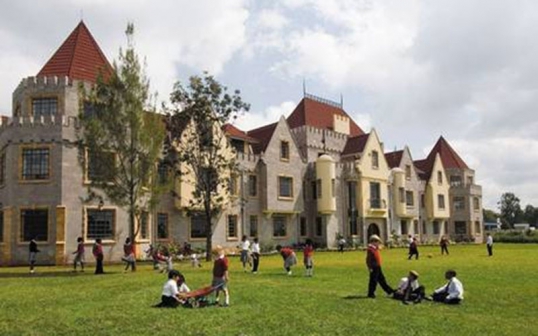
Those who survived boarding school on the strength of ‘murram’ (githeri) were mesmerised when the menu for students at the prestigious St Andrew’s School, Turi, went viral two weeks ago.
They marvelled at how students feed on among others; fried eggs, grilled tomato, cereals, fresh juice, baked beans and toast for breakfast, while lunch has roast chicken with lemon n’ ginger maxim potato, veggie moussaka and chocolate mousse, with dinner featuring beef lasagna n’ ginger bread, matoke and grilled veggie.
That is just Monday. Tuesday sees waffles n’ syrup, berry yoghurt, fresh fruits and toast gracing the breakfast menu, before a lunch of fish and chips, paneer kebabs, pineapple crumble with vanilla custard sauce, while supper has Chinese style pork fillet served with pasta, leek n’ potato pie and fruit salad served.
St Andrew’s Turi reminds us of the legacy left by Italian Prisoners of War, most of them pilots and sailors.
They were captured during World War II that rocked the world between 1939 and 1945 and shipped to Britain before being transported to far-flung outposts of the British Empire of which Kenya was part. Others were captured and evacuated by the British after their excursion to make Ethiopia a colony came to utter grief.

The Prisoners of War increased after the surrender of Italy in 1943 and in Kenya at 55,000, there number was double that of Odieros. The colonial government decided to make use of them in military intelligence, propaganda and more importantly, in plugging labour shortages.
Since under Geneva Conventions prisoners are not supposed to work, the British engaged them in stuff not directly related to the war effort. They were thus involved in forestry, agriculture and civil construction.
Co-belligerency meant that Italian prisoners prepared to undertake work beyond the terms of the Geneva Convention were offered better pay, conditions and the chance of early repatriation while remaining as prisoners, notes Bob Moore in his 2015 effort, Enforced Diaspora: The Fate of Italian Prisoners in Second World War.
These Italian prisoners helped in constructing St Andrew’s School, Turi which was founded in 1931 by the Scottish Levet family and named after the patron saint of Scotland. It was for farmers’ children in Kenya’s White Highlands around Molo, but in 1941, it was razed down by fire which was where the Italian Prisoners of War came in during reconstruction to reduce labour costs.
Indeed, the school crest features a phoenix rising from the ashes, and an annual bonfire commemorates that part of its history.
Besides St Andrew’s School, the Italian prisoners who were held in the 11 detention camps in Kenya also built the Maai Mahiu-Naivasha Road. And it was during its construction that they erected a church during breaks for prayers in 1942.

The British were Anglicans, while the Italians were Catholics, hence the need for their own church. A cemetery for prisoners who died of malaria and TB during construction of the treacherous road up a steep 450 metres from the floor of the Rift Valley all the way to Limuru, is still at the church.
Today, the pentagon shaped 20-seater church with four wooden pews is the country’s smallest. But it was in Nyeri where the Italians, especially missionaries, had the most impact. Emilio, Basillioh, Octavia and Nemesius are common names among Kenyans from Nyeri County, where Italians built what is today an architectural phenomenon; the colossal Italian War Memorial Church on the outskirts along Ihururu Road was built in 1952.
It is said to contain remains of about 700 Italian prisoners of war whose names are enshrined in the plaques around it.
Found here too, is the marble tomb of Amadeo di Savoia (the Duke of Aosta) who was appointed by Italian fascist dictator Benito Mussolini as commander-in-chief of the Italian forces in East Africa.
To date, the Italian government burns over Sh600,000 to maintain it. Never mind that mass is only celebrated once a year: November 4, to remember fallen Italian Prisoners of War.
 The Standard Group Plc is a multi-media organization with investments in media
platforms spanning newspaper print
operations, television, radio broadcasting, digital and online services. The
Standard Group is recognized as a
leading multi-media house in Kenya with a key influence in matters of national and
international interest.
The Standard Group Plc is a multi-media organization with investments in media
platforms spanning newspaper print
operations, television, radio broadcasting, digital and online services. The
Standard Group is recognized as a
leading multi-media house in Kenya with a key influence in matters of national and
international interest.
